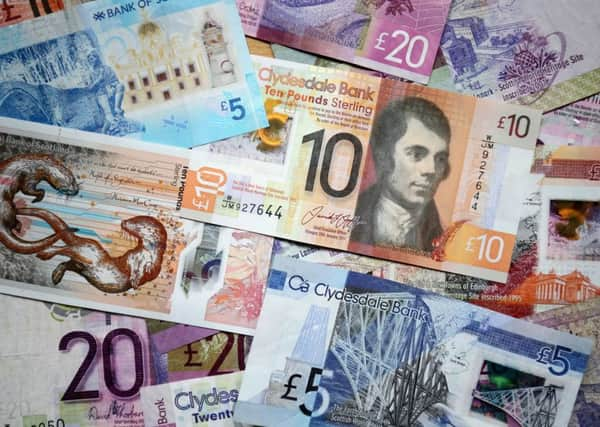Warning as counterfeit notes are passed on in the Borders


Some have also been used for payment in East Lothian and Midlothian.
Enquiries are ongoing to establish the provenance of these notes – and officers are urging businesses and members of the public who regularly handle cash to be on their guard against counterfeit money and to consider their personal safety when dealing with any individual attempting to pass counterfeit currency.
Advertisement
Hide AdAdvertisement
Hide AdAll bank notes should be thoroughly checked, particularly if they are of high value, before completing a transaction.
A police spokesperson said: “Please examine the notes carefully for texture, watermark, sharpness of print and size.
“Retailers can take simple steps to avoid being scammed in this fashion by using such items as counterfeit note detector pens or UV scanners, both of which greatly increase the chances of picking up a counterfeit note before change has been passed of goods supplied.
“Anyone who deliberately uses counterfeit currency is committing a crime and we will investigate all instances reported to us.
Advertisement
Hide AdAdvertisement
Hide Ad“Anyone who has concerns about counterfeit money should call police on 101 or Crimestoppers on 0800 555 111.”
The Royal Bank of Scotland gives the following tips for inspecting notes:
Serial Numbers
Genuine notes have unique serial numbers therefore if you have two notes displaying the same serial number at least one of them is a counterfeit
Paper
Genuine banknote paper should be reasonably crisp and not limp, waxy or shiny and the special printing processes give banknotes an individual feel. It should not feel like normal paper.
Watermark
Advertisement
Hide AdAdvertisement
Hide AdGenuine watermarks should be hardly apparent until the note is held up to the light when the clear portrait with subtle light and shade becomes visible. The watermark on RBS is an image of Lord Ilay who appears on the front of the banknotes.
Security Thread
Genuine notes have a metallic thread embedded in the paper and when the note is held up to the light the thread appears as a bold continuous line
Printing
Raised print is used in some of the features on genuine banknotes and should feel slightly rough to the touch. Lines and print should be sharp and well defined with no blurred edges. Colours should be clear and distinct – not hazy. The wording on RBS banknotes is in raised print
Move/Tilt
If a genuine note bears a hologram the colours/images will change depending on the angle the note is held
Detector Pen
Advertisement
Hide AdAdvertisement
Hide AdWhen applied; detector pens leave a dark line on most counterfeit notes; if the note is genuine the pen leaves no mark. We recommend that you mark a suspect banknote diagonally from corner to corner
UV Light
Genuine banknotes are dull under a UV light with only the special UV features present in the note highlighted yellow
Magnifying Glass
Genuine notes contain some microprint that is only visible using a magnifying glass. On a genuine note the print should be sharp and well defined with no blurred edges. On RBS banknotes microprint features within the block of colour at the bottom of the front of the note and should read ‘RBSRBSRBSRBS’ and the line above this block of colour should read ‘The Royal Bank of Scotland’